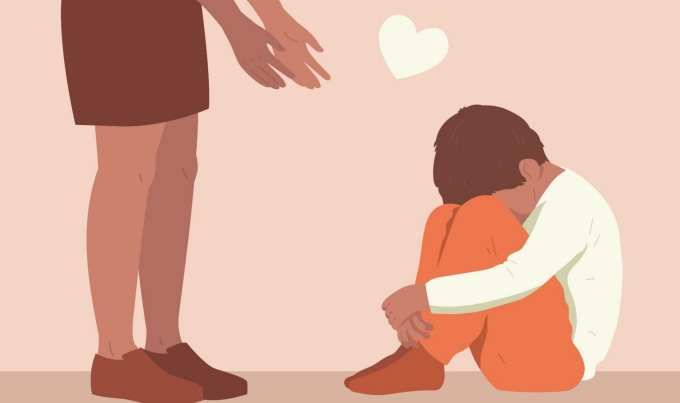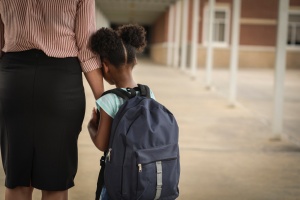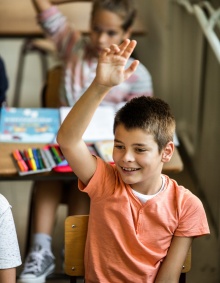It takes a village
Addressing the youth mental health crisis at all levels of practice

By Matthew Biddle
Youth mental health is in crisis.
Sadly, that statement is not hyperbole, but rather a fact declared by several medical associations and reinforced by data from schools and hospitals nationwide.
In 2021, the American Academy of Pediatrics (AAP), the American Academy of Child and Adolescent Psychiatry, and the Children’s Hospital Association declared a national state of emergency in children’s mental health. According to these organizations, rates for youth mental health concerns and suicide rose steadily from 2010 to 2020 — when COVID-19 pushed the crisis over the edge.
The AAP reports that half a million children are evaluated in emergency departments each year for mental or behavioral health concerns. Studies show the pandemic led to increased levels of stress, anxiety and depression among kids. Last year, the National Center for Education Statistics found 7 in 10 public schools have seen an uptick in students seeking mental health services.
“Adolescent mental health has been a concern for decades now,” says Annahita Ball, an associate professor in the School of Social Work, whose research focuses on educational justice and youth well-being. “We’ve always underdiagnosed children’s mental health needs, and there’s consistently been a gap between those who need services and those who have access to services.
“So, the conditions were in place for this to become a crisis, and then COVID really tipped the scales,” she explains. “The social isolation that came with COVID was huge for kids. There was a lot of fear, not knowing what was happening or having family members who were sick. For some kids, school was their safe place, and they faced more adversity being home and not being able to escape.”
Ball says a lack of providers across the country has exacerbated the crisis. In August, The Washington Post reported that it would take tens of thousands of additional school social workers, counselors and psychologists to meet current needs.
“Since COVID, we’ve seen a diminishing workforce in mental health, as many people left the field because of the pay or work conditions,” Ball says. “Often, school social workers feel like they don’t have anyone to connect with. Providers are overloaded with long wait lists, and it’s especially hard to find providers that offer culturally relevant services.”
— Annahita Ball, PhD, associate professor, UB School of Social Work
Identifying priorities
With a crisis of this magnitude, how do you even begin to move the needle? Ball recently chaired the Western New York School Mental Health Task Force to answer this question.
Supported by a grant from the National Institutes of Health to UB, the task force brought together experts from several school districts and universities — including School of Social Work PhD candidates Megan Bailey and Candra Skrzypek — to identify local priorities for enhancing school mental health services. (For all recommendations, visit socialwork.buffalo.edu/schoolmentalhealth.)
Now, Ball is using those priorities to guide her work with Erie 1 BOCES to advance school-community partnerships that improve youth mental health.
“The thing that could make the biggest impact is improving the community infrastructure to support families and children around mental health,” Ball says. “A school could be operating really well, but if there’s no one to provide more intensive services for families, it’s not going to happen.”
Ball points to family support centers as a best practice in this regard.
Joey Cicatello, MSW ’21, serves as director of community support services at Charter School for Applied Technologies (CSAT) in Buffalo and leads its Family Support Center to enhance student well-being through collaboration with families and the community.
“During COVID, students missed out on socialization and co-regulation, so now we see that social-emotional and behavioral support is just as important as pedagogy and academics,” he says. “Students come to school to learn academics, but it’s so much more than that.”
Cicatello provides individual, group and family counseling, conducts home visits, helps families navigate public systems, and connects them to community resources, including housing.
“We not only look at the whole student, but also their environment and how that contributes to their success or the barriers they face,” he says, noting that CSAT has behavioral health specialists, counselors and social workers embedded in each of its three buildings.
CSAT’s focus on the “whole student” resonates with Jamali Moses, a DSW student and field educator who has been a school social worker for 17 years. Her school, Humanities Preparatory Academy, was the first school in New York City to implement restorative practices; today, Moses coordinates its restorative justice program, along with other duties.
“A child is not just a student. They are part of many systems — their family, school, after-school programs — and everyone in those systems influences their well-being,” Moses says. “If you can engage with those systems, it helps students see that you have a deep interest in them and develop trust with you, and it helps you understand who the student is in different arenas of their life.”
Consider the outgoing student who’s withdrawn at home, or the disruptive class clown who responsibly “parents” their siblings at home. Without examining a child’s life outside academics, Moses says, it’s difficult to provide proper supports.
Moreover, Moses points out that the youth mental health crisis has not hit all communities equally. White and Native youth have the highest rates of suicide among all youth, yet Black youth suicide rates are increasing faster than any other racial group, according to the Centers for Disease Control and Prevention.
“COVID was traumatic collectively for all of us,” Moses says. “But the disparities among students played out during quarantine. For some students, going remote wasn’t a big deal because they had the technology and Wi-Fi access. Other students did not, so even academically, our students came back at different places depending on how engaged they were during quarantine.”
Thinking big

Another effect of COVID that Helena Rankin, MSW ’02 — a school social worker in Dunkirk, New York —has observed is kids’ attachment to their devices and social media. Amid the pandemic, their academic and social lives moved online, and today, bullies and other dangers can follow them there.
Rankin says schools must understand kids’ tech usage and meet them in digital spaces. For example, QR code stickers posted throughout her school direct kids to mental health resources. She recently piloted an app that asks students to rate how they feel each day and sends automatic alerts to her for kids who might need a check-in.
Support from leadership is critical to funding initiatives like these and sustaining a much-needed focus on mental health in schools.
“Sometimes, I feel like I'm on an island because I don't really make decisions higher up; I can only suggest things,” Rankin says, noting that she’s fortunate to be one of nine social workers in her small district.
“Turnover is a huge issue, though,” she continues. “You feel like you’re making progress with a new program or agency collaboration, and poof — suddenly, you have to start from scratch with new administration or new people in the community.”
That’s why PhD candidate Candra Skrzypek, MSW ’17, argues for a macro-level approach to improve services or policies within schools, communities and beyond.
For her research, Skrzypek developed a scale to measure teachers’ understanding and training around youth mental health. For her dissertation, she’s looking at how school-level factors — like the suspension rate, poverty rate and racial demographics — affect referral rates for mental health services.
“We need to look at how we recruit and retain mental health professionals, but we’re not going to solve the mental health crisis by just putting more one-on-one counselors in schools,” she says. “What can we do at the school level to influence student well-being? That might include implementing more equitable practices, looking at restorative justice, having culturally responsive curriculums and making sure school is an inclusive environment for students of color and LGBTQ+ students.”
— Helena Rankin, MSW ’02, school social worker, Dunkirk City School District
Preparing the future

Here at UB, the School of Social Work continues to educate future social workers who will be part of the solution at all levels — from micro-level work in schools and agencies to setting policy in districts or governments. Many alumni work in schools, and many more work in other settings that serve youth and families, thus contributing to the community infrastructure Ball identified as a critical need.
Even before graduating, students can make a positive impact on young people through fieldwork. The School of Social Work has fostered a growing number of partnerships with public, private and charter schools, early childhood centers and schools that serve unique populations, like Buffalo Public School 84, which is part of Erie County Medical Center and educates kids with significant health challenges. Last year, 75 students completed field placements at 46 schools or school-based programs.
As clinical associate professor in field education, Michael Lynch, MSW ’10, serves as UB’s liaison to schools for field education. He says schools provide excellent training ground for MSW students to master basic social work skills and learn how to navigate complex systems. In addition, social work interns help run critical programming with partners like community food banks.
As more schools direct funding to social-emotional supports, some students have even been hired by their placement site after graduation, Lynch says.
"A school-based placement is really a crash course in many things students learn in the classroom,” Lynch says. “They see the impact of trauma or how policy affects the school climate and what students learn. Then, they can intervene by working directly with students or at the mezzo or macro level by helping to run programs that impact the entire school.”
Do you work in a school or related setting? Partner with us to host MSW student interns. For more information, contact our Field Education Office at sw-field@buffalo.edu.